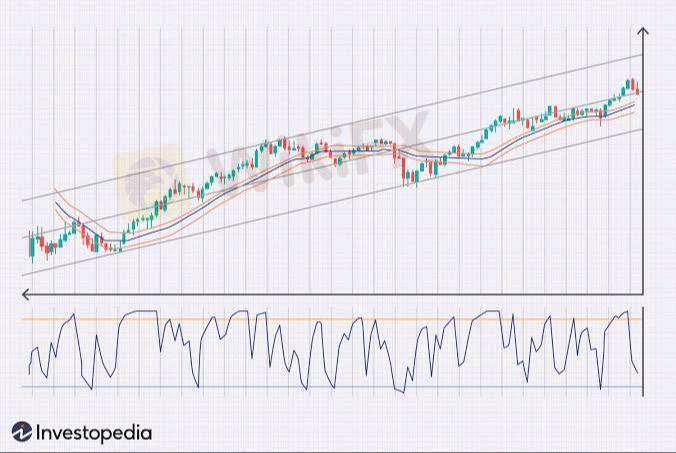
2025-04-28 12:00
IndustryPredicting the effect of real interestrate changes
#CurrencyPairPrediction
Predicting the effect of real interest rate changes on Forex markets requires understanding the concept of real interest rates and their implications for capital flows and currency valuation. The real interest rate is the nominal interest rate adjusted for inflation, providing a clearer picture of the actual return on investment or the real cost of borrowing. It is calculated approximately as the nominal interest rate minus the inflation rate.
Changes in real interest rates can significantly influence currency strength through several channels. Higher real interest rates in a country tend to attract foreign investment. Investors seek higher real returns, leading to increased demand for the country's assets, which in turn necessitates buying its currency. This increased demand strengthens the currency relative to others with lower real interest rates. The expectation of higher real interest rates in the future can also lead to anticipatory capital inflows and currency appreciation.
Conversely, lower real interest rates can make a currency less attractive to foreign investors, potentially leading to capital outflows and currency depreciation. Investors may move their funds to countries offering higher real returns. Moreover, lower real interest rates might be indicative of a weaker economic outlook or accommodative monetary policy aimed at stimulating growth, both of which can negatively impact a currency's value.
The relative difference in real interest rates between two countries is a crucial factor in predicting the movement of their currency pair. According to the theory of real interest rate parity, the real interest rate differential between two countries should equal the expected change in their real exchange rate. While this parity condition may not always hold in the short run due to various market frictions and risk premiums, it suggests a fundamental relationship between real interest rate differentials and long-term currency trends.
Central bank actions that influence nominal interest rates and inflation expectations are key drivers of real interest rate changes. Unexpected changes in monetary policy that lead to significant shifts in real interest rates can trigger substantial movements in Forex markets as traders and investors adjust their expectations and positions. Therefore, monitoring inflation data, central bank announcements, and economic indicators that influence both nominal rates and inflation expectations is essential for predicting the effects of real interest rate changes on currency pairs.
Like 0
ghost2941
Trader
Hot content
Industry
Event-A comment a day,Keep rewards worthy up to$27
Industry
Nigeria Event Giveaway-Win₦5000 Mobilephone Credit
Industry
Nigeria Event Giveaway-Win ₦2500 MobilePhoneCredit
Industry
South Africa Event-Come&Win 240ZAR Phone Credit
Industry
Nigeria Event-Discuss Forex&Win2500NGN PhoneCredit
Industry
[Nigeria Event]Discuss&win 2500 Naira Phone Credit
Forum category

Platform

Exhibition

Agent

Recruitment

EA

Industry

Market

Index
Predicting the effect of real interestrate changes
 Malaysia | 2025-04-28 12:00
Malaysia | 2025-04-28 12:00#CurrencyPairPrediction
Predicting the effect of real interest rate changes on Forex markets requires understanding the concept of real interest rates and their implications for capital flows and currency valuation. The real interest rate is the nominal interest rate adjusted for inflation, providing a clearer picture of the actual return on investment or the real cost of borrowing. It is calculated approximately as the nominal interest rate minus the inflation rate.
Changes in real interest rates can significantly influence currency strength through several channels. Higher real interest rates in a country tend to attract foreign investment. Investors seek higher real returns, leading to increased demand for the country's assets, which in turn necessitates buying its currency. This increased demand strengthens the currency relative to others with lower real interest rates. The expectation of higher real interest rates in the future can also lead to anticipatory capital inflows and currency appreciation.
Conversely, lower real interest rates can make a currency less attractive to foreign investors, potentially leading to capital outflows and currency depreciation. Investors may move their funds to countries offering higher real returns. Moreover, lower real interest rates might be indicative of a weaker economic outlook or accommodative monetary policy aimed at stimulating growth, both of which can negatively impact a currency's value.
The relative difference in real interest rates between two countries is a crucial factor in predicting the movement of their currency pair. According to the theory of real interest rate parity, the real interest rate differential between two countries should equal the expected change in their real exchange rate. While this parity condition may not always hold in the short run due to various market frictions and risk premiums, it suggests a fundamental relationship between real interest rate differentials and long-term currency trends.
Central bank actions that influence nominal interest rates and inflation expectations are key drivers of real interest rate changes. Unexpected changes in monetary policy that lead to significant shifts in real interest rates can trigger substantial movements in Forex markets as traders and investors adjust their expectations and positions. Therefore, monitoring inflation data, central bank announcements, and economic indicators that influence both nominal rates and inflation expectations is essential for predicting the effects of real interest rate changes on currency pairs.
Like 0
I want to comment, too
Submit
0Comments

There is no comment yet. Make the first one.

Submit
There is no comment yet. Make the first one.